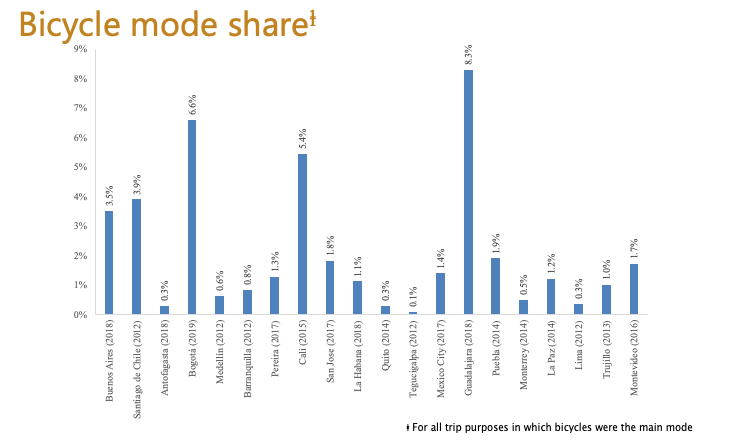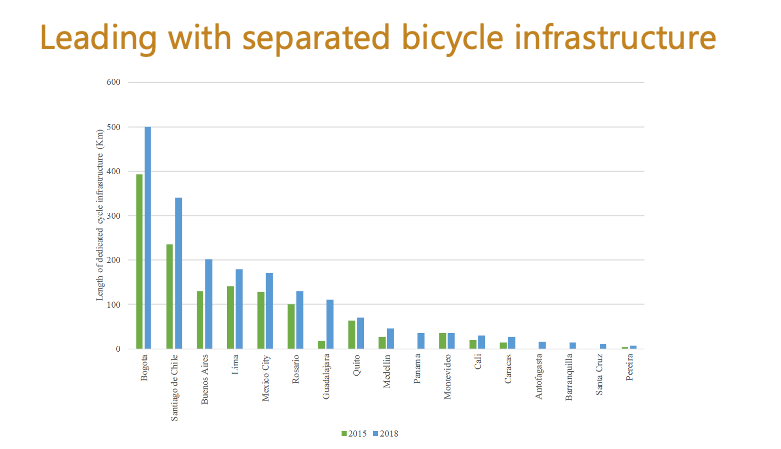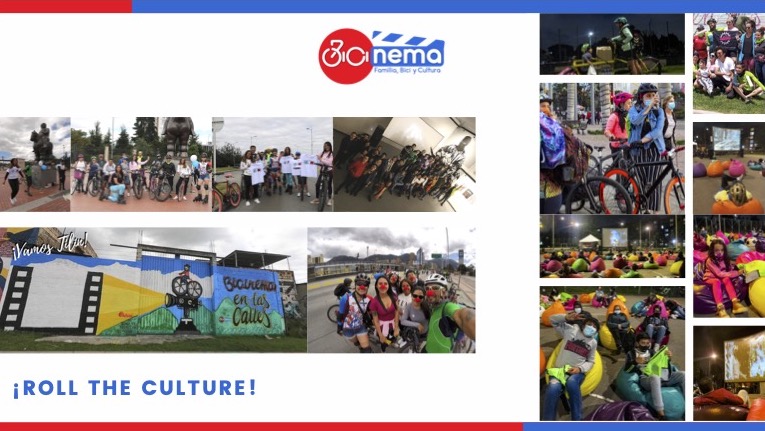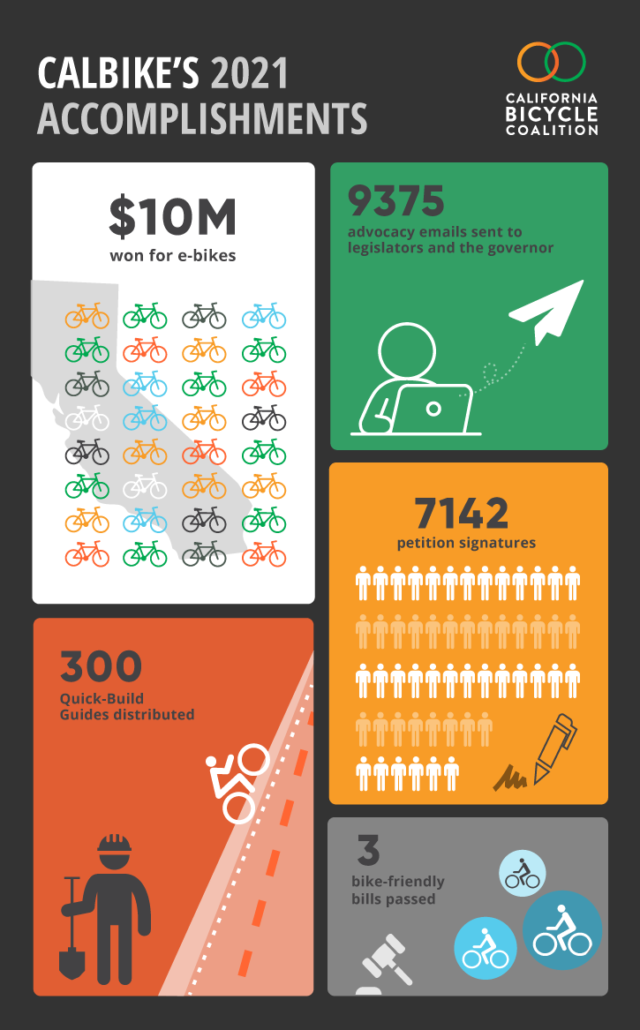CalBike’s E-Bike Subsidy Program Will Change Lives
Erin Shannon’s work as a project administrator for a general contractor takes her to project sites or to the main office, which means a commute from Oakland to San Francisco or South San Francisco. “I had to drive to and from. That was an hour or hour and a half to get there and up to three hours to get home,” she says. “It was not okay.” Taking transit wasn’t any better, particularly since part of the commute would involve tricky timing to catch a shuttle. Her health suffered. “I was absolutely miserable,” she recalls.
Three things happened to change Shannon’s life. “I had one of my best friends pass away and it made me want to change my life, to live,” she says. “Then I met someone.” Her new friend was a “heavy-duty bicyclist.” So, when her car got totaled, her friend helped her use the insurance money to buy an e-bike. He set up her bike so it is really comfortable to ride.
With the e-bike, Shannon was able to change her commute from being stuck in traffic to riding to and from public transit. “I had been really depressed before I started moving so much,” she says. “I feel healthier, mentally as well as physically.”
CalBike’s long campaign for e-bike purchase incentives
CalBike’s goal is to create a healthier and more equitable California by making biking accessible to more people. We do that by advocating for state funding for bikeways and changes to laws and regulations to create safer streets. E-bikes, because they make the life-changing joy of bicycling accessible to a wider range of people, are a vital part of that strategy.
“Electric bikes make biking a viable transportation choice for a broader range of people,” says Dave Snyder, CalBike’s executive director. “But, with the price of an average e-bike at $1,500 or more, many people need help to make that purchase. California gives incentives to help people buy EVs; it should do the same for e-bikes.”
In 2019, CalBike helped pass SB 400 (Umberg), which added e-bike vouchers to the Clean Cars 4 All program. The program, administered by the California Air Resources Board, allows lower-income Californians to trade in polluting automobiles and receive vouchers toward an EV purchase. And now, thanks to SB 400, you can get a voucher for an e-bike purchase. Check out the program on your local Air Quality Control Board website to get the specifics for your area.
However, the SB 400 roll-out was delayed by the pandemic in 2020. In addition, unlike the electric car vouchers, the bike program is restricted to low-income people, and you have to have a qualifying car to turn in. We knew we needed to do more.
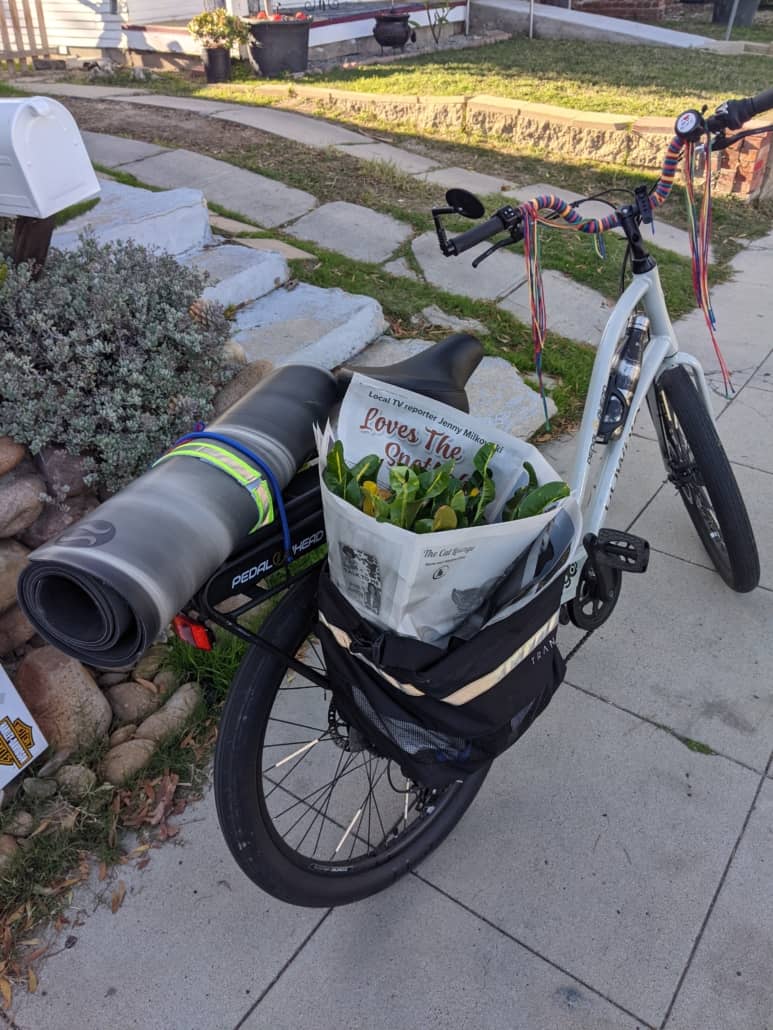
E-bike subsidies work
Monica delaCruz used to get around San Diego on a bike she bought off craigslist or by arranging rides with friends. “I’m the type of person, I like to go out a lot, do arts things, political things,” she says. But she felt dependent on rides when she wanted to go further, so she ended up staying home more because it was too much effort to go out.
Buying an e-bike was not part of the plan for delaCruz because she assumed it was out of her price range. “I was not going to pay that much for a bike,” she says. But when she heard about a county program in San Diego that would give her an e-bike if she agreed to log her miles and share her trips, she jumped at the chance.
“I just feel like my radius around my house where I’m comfortable going for picking up dinner or meeting friends is bigger,” she says. “Weather doesn’t matter as much, terrain doesn’t matter as much.” She adds, “I feel like I’m way more connected to any place that I need to go in San Diego.”
One of the biggest changes was her commute to National City, which can take up to an hour with multiple transit connections. “Now, I can get to the more convenient transit station because I’m not worrying about going up and down the hill,” delaCruz says. She can take her e-bike on the trolley and ride to her office, cutting her commute down to 20 minutes.
She has also found solace on her bike. “Sometimes, in the middle of the day, if it’s not too hot, I’ll take a ride. For me it’s really relaxing,” she says. Some of her friends have e-bikes through the same program and they sometimes meet up and ride. “Now it’s more social and relaxed to go on a bike ride together when you’re not worried about being out of breath talking.”
Now, delaCruz would like to get another e-bike and a purchase incentive would make that much more possible for her.
With an electric boost, people ride more often and go farther by bike
As we ramped up our 2021 E-bike purchase incentive campaign, we asked CalBike members and supporters for their e-bike stories. Dozens of people wrote to tell us how an e-bike purchase had changed the way they get around.
The electric boost helps people keep riding through age or health issues. Some people turned to e-bikes to help them get up hills or ride with children. Many shared that their e-bikes turned long commutes into fun and doable rides and made running errands a breeze.
Brian Cox uses his e-bike for a 20-mile commute from Placentia to Irvine. “I am not a recreational cyclist,” he says. “I ride my bike because it’s a reason to get to work. It’s a total transportation alternative for me.” He started bike commuting in 2007 as a way to get outside and get more exercise. But the e-bike reduced his commute time each way by a third and enables him to ride five days a week instead of two.
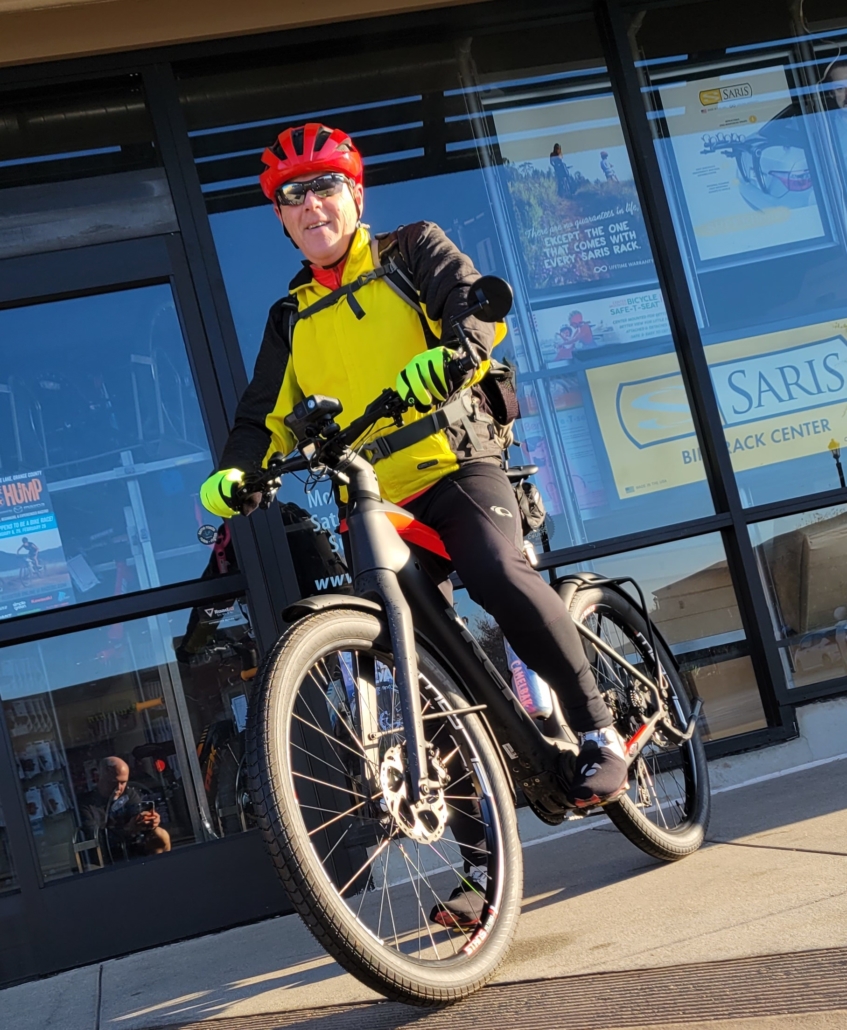
He monitors his heart rate while he rides and finds it’s only 10 bpm less on the e-bike than on his classic bike. And studies have shown that riding e-bikes keep riders fit because they tend to ride longer distances and more often than they would have on a manual bike.
Cox rides a Class 3 e-bike with a top speed of 28 mph, which helps him feel safe sharing the road with cars. “They have a lot more opportunity to see me than if I’m going 10 and they’re going 40,” he says. “With people’s distractions, that little bit of time can be a lifesaver.”
As VP of Operations for Jax Bicycles, Cox didn’t have to buy his e-bike. It is his “company car,” owned by his employer, which also pays employees $3 a day for commuting to work by bike.
He has seen e-bike sales shoot up in the last five years at his stores. “My hope and dream is that people will start to recognize that they have an option to maybe ride their bicycle to work now that they’ve got an e-bike,” he says. He hopes that e-bike rebates will raise awareness about what’s possible.

Radical joy
In a huge victory for low-carbon transportation in California, CalBike secured $10 million in funding for e-bike purchase incentives. Unlike rebates or tax breaks, which require people to front the money for a purchase and get it back later, the program will give people credits that they can use to buy an e-bike. That makes the program useful and accessible to people who wouldn’t otherwise have the money to buy an e-bike.
When CARB launches the program in July 2022, it will put 10,000 or more new e-bikes on the road across California. Shannon and delaCruz give us a window into the impact that will have on people’s lives and their happiness.
“I think we need to change our idea about how we get from point a to point B,” delaCruz says. “This is how I get places. This is my form of transit.” She definitely rides more miles now that she has an e-bike.
She also thinks the e-bike revolution can change how we think about who bikes. “Everybody thinks of the bike commuter being the 2% body fat guy with lycra,” delaCruz says. “I’m fat, my friends are fat, and I’m seeing more people out with larger bodies. It’s beautiful. I love seeing it around town. And I love being seen too.” E-bikes take away the barrier of worrying about not being able to keep up on a bike or worrying about your fitness level.
Shannon uses her daily commute as a stress-reducer: “I’m outside, the wind is blowing through my hair, I can see birds. It’s pretty beautiful. I feel like Snow White or Mary Poppins,” she says. “I feel powerful when I’m on my bike. And free. And I hadn’t felt that in a long time. That’s pretty amazing.”
“It’s like you’re directly involved in life, instead of being in a little tube. It’s freedom, bottom line.”
– Erin Shannon
And she sees her e-bike as a wise investment. “This bike, when I got it, was the most expensive thing I’ve ever owned outright,” Shannon says. “It was terrifying. But then I thought about it and about how much less I would spend on gas in the car.” She adds, “And I feel like I’m contributing to the environment, not being one of those cars stuck in traffic.”
The benefits of CalBike’s e-bike program will extend beyond the people who will be able to afford new e-bikes. “More people experiencing their roads outside of their car can experience road safety in a different way,” delaCruz says. “I hope it brings safer roads for everybody.”
CalBike’s Snyder sees safety as a major benefit of the new e-bike affordability program. “We’ve seen data this year that shows there is safety in numbers for bike riders on the streets,” he says. “And we know that, when people see more e-bikes and see how much fun people are having, they’re going to want one too.” He’s also looking to the future. “Some European countries have recognized the importance of adding biking to the transportation mix with cash incentives for all types of bikes, or repairs or gear. We’d love to see California offer subsidies on every bike purchase, electric or classic.”
So look for more e-bikes—and more joy—on the road very soon.

